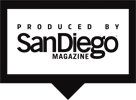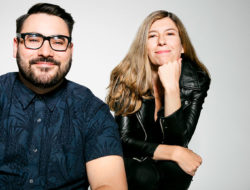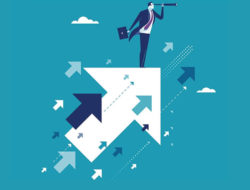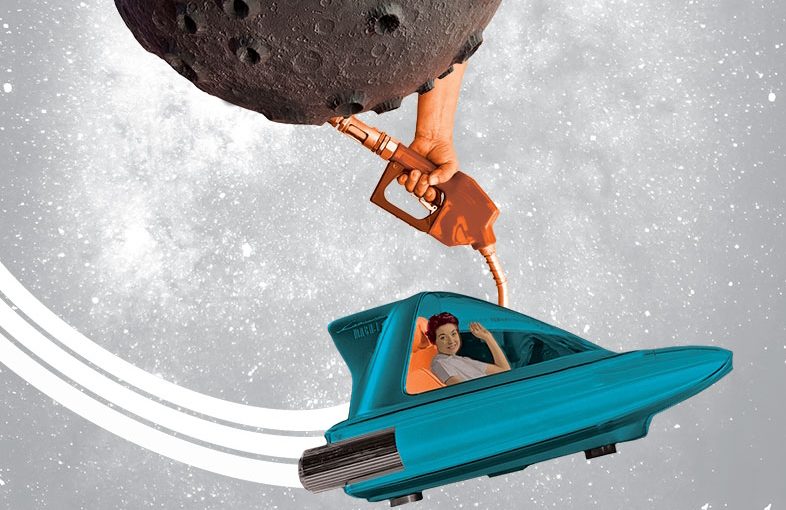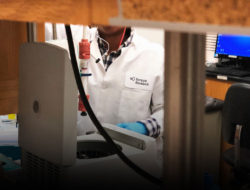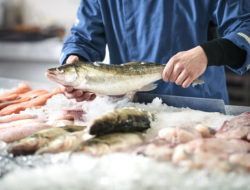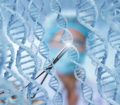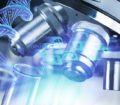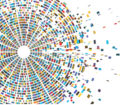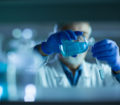1 Space Cowboys
The Red Planet hogs the attention when it comes to exploring space, but the next stop on the way there—which sounds straight out of a sci-fi novel—is closer than we think: asteroid mining.
There are thousands of asteroids in orbit near Earth, possibly loaded with valuable metals like platinum, and water and hydrogen that could be used for fuel. Private companies are developing a spacecraft that would hitch a ride on a larger rocket, land on the asteroid, and harvest the resources. Deep Space Industries (DSI) and Planetary Resources (the latter backed by Google co-founder Larry Page and director James Cameron) are at the forefront of this exploration.
DSI is working with the nation of Luxembourg to launch its Prospector-X satellite to scope out asteroids for their mining potential, hopefully next year. Though DSI is based in the Bay Area, its attorney, Sagi Kfir, is here in San Diego and the first lawyer who specializes in extraterrestrial mining. He helps DSI navigate the changing frontier in space law, which is governed by a Cold War–era treaty saying no nation can own any part of outer space. Kfir says DSI plans to keep 90 percent of what they harvest in space, to eventually refuel satellites or supply service depots for future missions.
Experts say asteroid mining will be a reality by 2025. Superstar astrophysicist Neil deGrasse Tyson told CNBC, “The first trillionaire there will ever be is the person who exploits the natural resources on asteroids.” Looks like another space race is on the horizon.
2 And speaking of space…
Here’s a San Diego company making a global impact: Carlsbad’s ViaSat is teaming up with the European Space Agency in a three-year agreement to invest in high-capacity satellites, which promises to bring better broadband service to far-flung corners of the globe and more Wi-Fi access to airplanes. (They’re already powering Wi-Fi on Virgin America flights.) The company is planning to launch its second satellite—about the size of a city bus and the highest capacity of its kind in the world—next year.
3 Haute Light
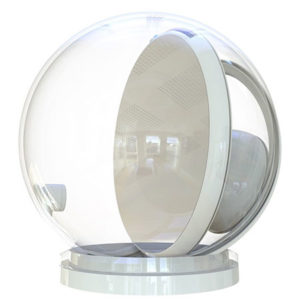
Working in a windowless room is the pits, but scientific evidence says it’s even worse for us than we thought. A 2014 study from the University of Illinois showed that office workers who don’t have exposure to sunlight during their workday have sleep problems, exercise less, and may suffer from depression. But bringing the sunshine into a room, whether at work or at home, usually involves knocking out a wall or opening up a roof. That’s where this orb—named Lucy—comes in.
Developed by San Diego–based Solenica, Lucy is a solar-powered robotic mirror that redirects sunlight. It’s cordless and made up of photovoltaic cells and sensors, so all you have to do is put it in the sun and point it to where you need the light. Since Lucy could resemble anything from a terrarium to a glass sculpture or a high-end speaker, it can also function as part of a room’s decor, thanks to the sleek design by Alessio Paoletti, who has worked for fashion houses Roberto Cavalli and Bulgari. But despite its high-fashion link, Lucy doesn’t have a high price: Right now it’s about $300, and the company estimates it can replace about four 100-watt lightbulbs.
4 Insta-Science
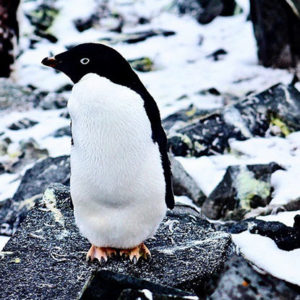
Allison Randolph’s Instagram photos are all over the place: Catalina Island, Florida, the South Pole. But she’s not humblebragging—she’s a marine biologist who’s worked at the Birch Aquarium at Scripps Institution of Oceanography, and is a tireless advocate for conservation. Here are a few things we’ve learned from her feed:
- Marine algae (like kelp) produce 70 percent of the oxygen on Earth.
- The Adélie penguin population is declining because of melting sea ice. (Randolph took this photo at Palmer Station, Antarctica.)
- California mussels attach to rocks with rope-like byssal threads that are five times as strong as a human’s Achilles tendon.
Follow her around the world! @ocean_allison
5 A New Narrative
We’ve designed a field of dreams downtown, but will they come?
By Mary Walshok
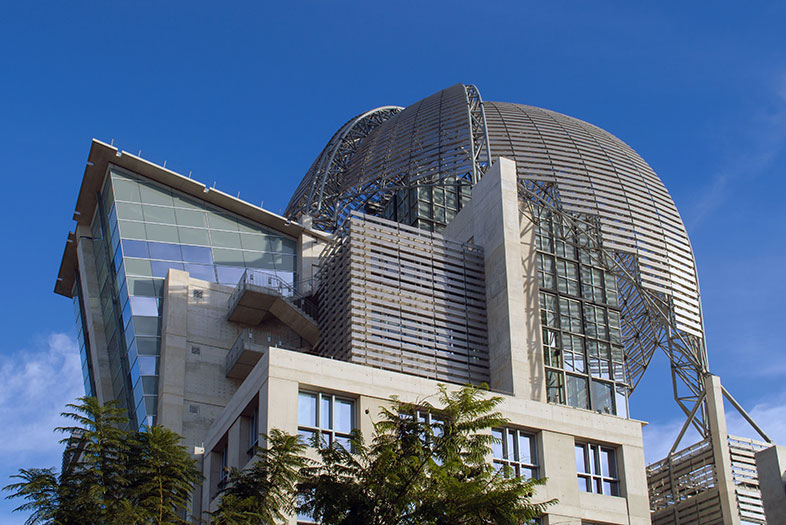
Innovation may be a buzzword now, but it has driven San Diego’s economic growth for more than 100 years.
It started with the dawn of the 20th century, when the U.S. military needed a port here to protect our expanding interests in the Pacific after the Spanish-American War. Our city founders saw the military, and particularly the Navy, as a way to grow a “clean economy” that would preserve our pristine and welcoming landscape in an era of “anti-industrialism” across America, drawing engineering talent and technical expertise to the region.
The Industrial Revolution, which had caused a near epidemic of respiratory diseases, also drew people to the undeveloped West and to San Diego, as the moderate climate and clean air served as a beacon for medical doctors, clinics, health providers, and patients. By the 1920s, San Diego was already a town rich in talent focused on the frontiers of science, engineering, and health, which expanded exponentially with the buildup to World War II.
The postwar boom here was similarly driven by a growing demand for advanced science and technology. But now it was the “race to space” and a national commitment to finding cures for public health crises like polio. Our political leadership and citizenry supported zoning decisions in the 1950s that enabled the growth of General Atomics, Salk and UC San Diego. A phenomenal number of world-class scientists migrated to the region as a result, seeding what is today one of the most dynamic knowledge-based economies in the world.
As we look to the future, it’s wise to examine how we might attract the next wave of innovators to expand our economic footprint. There’s no denying that IT, software, and big data represent the next innovation frontier, and the growth of these sectors depends on millennials who want to work and live in urban environments. They enjoy the sociability, walkability, and around-the-clock lifestyle of city centers like ours—this was the main conclusion reached by a recent demographic study conducted by UCSD Extension for the Downtown San Diego Partnership. Fortunately, the report affirmed that, though we’re often dismissed as a laid-back beach community, downtown already has what it needs to attract and retain creative millennial talent: A growing tech and startup market, supported by an ecosystem of more than 110 high-tech companies; the lifestyle and amenities of place they value—culture, food, and walkable neighborhoods; and a cost of living that is highly competitive with Los Angeles and San Francisco.
The problem is, many people both here and outside of San Diego are unaware of what our urban core has to offer. What the city needs is a new narrative. And it must be inclusive, given San Diego’s changing demographics.
Young people want to live in diverse urban settings, and promising connections already exist between downtown and contiguous neighborhoods such as Barrio Logan, the Diamond District, and Golden Hill. We have extraordinary links to manufacturing talent in Mexico. And soon, the San Diego Trolley will connect downtown to the Torrey Pines Mesa, meaning that all of the pieces needed to realize the promise of this next innovation frontier will be in place.
San Diego clearly has a long tradition and a bright future as an innovation hub. It’s in our DNA.
Mary Walshok is dean of UC San Diego Extension. Her latest book, Invention and Reinvention: The Evolution of San Diego’s Innovation Economy, illustrates that the city’s role as a science hub today was not an accident. It’s a must-read for anyone in San Diego who, well, lives here. Read it!
6 Open door policy
SD welcomed these companies, who relocated or expanded here.
Nexus eWater
Australia
Both California and Oz are struggling with drought, and the company developed the first gray water recycler for residences. It moved its headquarters to San Diego last year and installed its system in new homes in San Francisco, L.A., and Sacramento.
Bizness Apps
Bay Area
The CEO of this mobile app maker made headlines when he wrote San Francisco a goodbye letter on TechCrunch and announced he was moving the company here. Mayor Kevin Faulconer attended the ribbon cutting for their new La Jolla office in May.
Wrike
Bay Area
The cloud-based software company chose SD over Chicago and Phoenix for its expansion. It opened its office in UTC in March and plans to hire 100 San Diegans.
Google
Bay Area
The tech giant doesn’t have an office here, but it’s been reported they bought Lumedyne Technologies, a Serra Mesa startup that developed a new accelerometer and sensor that can track changes in direction, for $85 million. Google reps still won’t confirm the acquisition.
7 Wise Words
“Do you speak design? If not, then you need a strong design leader to help evangelize and elevate the impact of design. […] Any successful tech company needs to be humble—think customer-first, outside-in. Your design team can help you do that.”
—Kurt Walecki, VP of design at Intuit, in a May commentary for Recode.
8 Hear No Evil
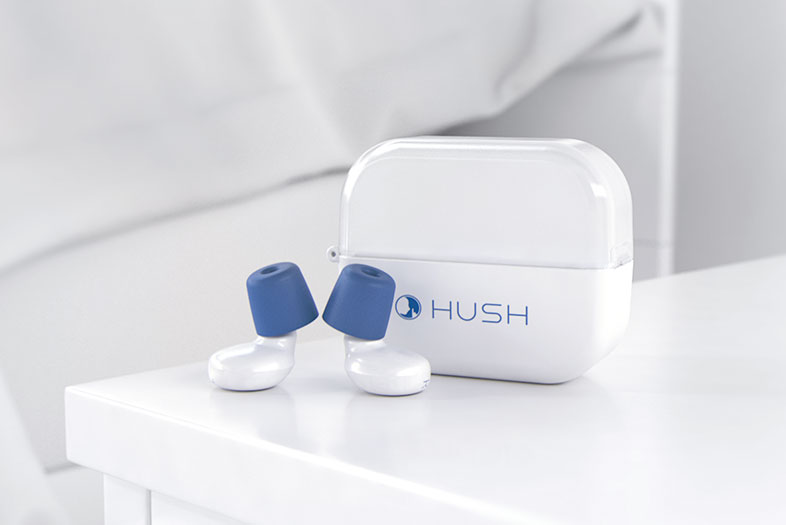
A San Diego company revolutionized how to tune the world out with its noise-canceling earplugs, Hush, which sound like a godsend for anyone who has housemates or travels frequently. A hybrid of earbuds and old-school foam plugs, Hush is comfy enough to wear while lying on your side, and uses Bluetooth technology to download soothing sounds, like a waterfall or white noise, directly into the plugs. Plus, incoming calls and alarms still come through, thanks to the paired app. Hush can block out 70 decibels, the level at which noises start to get annoying (freeway traffic, obnoxious neighbors, snoring), whereas plain foam plugs max out at around 30 decibels. After two years of development, CEO Daniel Lee (a UC San Diego alum) says Hush is available online for $150 and can be shipped in a few days—right in time for the busy summer travel season, when planes are filled with crying babies.
9 Where San Diego Stands
No. 7
We beat Austin and Washington, D.C. in the Software Power Index.
Source: San Diego Regional EDC, March 2016
4th
…best biopharma cluster in the nation based on VC funding, lab space, and more, topping Seattle, L.A., and Chicago.
Source: Genetic Engineering and Biotechnology News, May 2016
Top 20
U.S. cities by number of patent filings, ahead of Philadelphia, Dallas, and Atlanta.
Source: U.S. Patent and Trademark Office
10 Dispatch: Updates and impacts from innovation around the globe
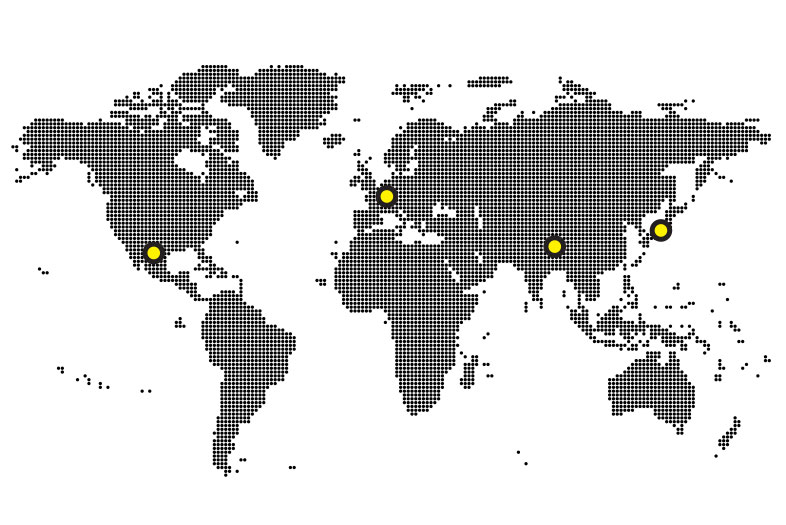
San Antonio
Next-level Gaming
Merge VR, a startup that makes virtual reality headsets for mobile platforms, announced a deal with GameStop to sell the goggles in its stores for $80 apiece.
Paris
Gut Feeling
Enterome Bioscience, a French company that develops therapies for gut microbiome diseases (like IBS) opened its first U.S. office in Boston.
Tibet
Top of the World
Mark Thiemens, UC San Diego’s dean of the Division of Physical Sciences, went on a mission this spring to study how climate change is affecting Mt. Everest’s glaciers and gauge how fast they’re melting.
Tokyo
Big Data Merger
NTT Data, one of the largest tech services companies in the world, bought Dell’s IT consulting division for $3 billion. The sale will give the company a larger footprint in the U.S.
11 Wise Words
“…Innovation requires creativity and diversity. Design and design thinking represent, to me, a unifying platform that we can use to bring a diversity of perspectives together to take an abstract concept and create something of value from it.”
—Paul Roben, associate vice chancellor of the new Office of Innovation and Commercialization at UC San Diego.
12 Straight Outta Convoy
Asian food lovers already head to the Convoy area for its restaurants and import grocery stores, but tech insiders know there’s more to the district. It’s been a startup hub since 2010. Wedged between a car dealership and a busy strip mall housing a popular ramen joint, the Ansir Innovation Center is easy to miss, but the companies coming out of its incubator have made a big impact, like The Green Neuroscience Laboratory (profiled in the New York Times), artificial-intelligence startup Emotient (which was acquired by Apple), and CleverPet, the maker of a robotic game console for dogs, got its start here. It even hosted Pangea Café, the first café in San Diego to accept bitcoin. The startup accelerator has about two dozen companies based in its coworking spaces, and it regularly hosts Meetups on topics ranging from bioinformatics to programming.
13 Presto Change-O
By Marie Tutko
Ladies, there’s a summer dress that doubles as a portable changing room that lets you completely switch outfits—and even take off a sports bra or swimsuit—in a public place while staying covered. Sounds like magic, but it’s real, and was developed here in San Diego.
Local entrepreneur Dennis Caco came up with the idea, called “The Undress,” when women in his running group had nowhere to change after workouts and opted to remain in dirty clothes. “They said that trying to change in their car, especially out of a sports bra, wasn’t worth it.” And changing under a large towel? Forget it. Caco found that nothing on the market addressed undressing safely, so he was determined to create it.
Here’s how it works: Open, lined side pockets let you change your bottoms underneath the dress without lifting the hemline. A long cord and plastic hook attached to the halter’s ties slides the top of the dress completely under a bra, covering everything up top while you change.
Caco and his colleague April Estrada launched the Undress on Kickstarter, where it became the site’s No. 1 women’s fashion project of all time. New styles are in the works, including a sport version and even one for men. Here’s to not having to do the “towel tango” ever again!
14 The Pitch
In 150 words or fewer, three San Diego startups sell our readers (potential investors?) on why their product or service is the next big thing, in their own words.
FitPod
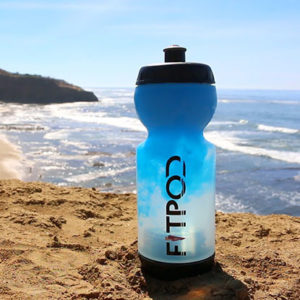 FitPod is a brand-new way to take your hydration to the next level. Using clean bottle technology along with an easy-to-use charge pod, users can enhance their water throughout the day easily with a squeeze. Simply load your FitPod Charge or OneShot with your favorite powder or liquid-based supplements, then place the pod on the bottom portion of the bottle, fill with water, and squeeze at your convenience. Every squeeze delivers the user’s own custom blend of flavor, proteins, or supplements without the struggle of spilling. The OneShot offers a one-time use, and the FitPod Charge offers up to ten on one fill. All of our products are made with high-quality BPA-free materials, so our users can feel confident that every charge is free of nasty chemical byproducts.
FitPod is a brand-new way to take your hydration to the next level. Using clean bottle technology along with an easy-to-use charge pod, users can enhance their water throughout the day easily with a squeeze. Simply load your FitPod Charge or OneShot with your favorite powder or liquid-based supplements, then place the pod on the bottom portion of the bottle, fill with water, and squeeze at your convenience. Every squeeze delivers the user’s own custom blend of flavor, proteins, or supplements without the struggle of spilling. The OneShot offers a one-time use, and the FitPod Charge offers up to ten on one fill. All of our products are made with high-quality BPA-free materials, so our users can feel confident that every charge is free of nasty chemical byproducts.
Skylit Medical
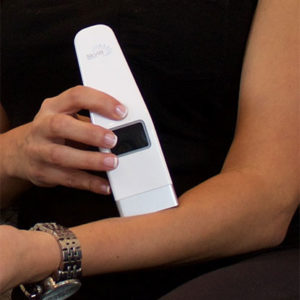 More than 40 million people in the U.S. suffer from inflammatory skin conditions that have no cure, including psoriasis and eczema. Patients spend $30 billion a year trying to alleviate their symptoms, but the most effective treatment, clinical UVB therapy, is the most inconvenient and least-used option. That’s where Skylit comes in: It’s a UVB clinic in a handheld device. The device is used at home with an LED engine that administers a dose of UVB in only 40 seconds, sending usage data to an iOS and Android app that reminds patients of their treatment and guides them through their prescription. Physicians and health care systems can easily access this data to ensure compliance, drive new revenue streams, and buffer against the astronomical costs of biologics.
More than 40 million people in the U.S. suffer from inflammatory skin conditions that have no cure, including psoriasis and eczema. Patients spend $30 billion a year trying to alleviate their symptoms, but the most effective treatment, clinical UVB therapy, is the most inconvenient and least-used option. That’s where Skylit comes in: It’s a UVB clinic in a handheld device. The device is used at home with an LED engine that administers a dose of UVB in only 40 seconds, sending usage data to an iOS and Android app that reminds patients of their treatment and guides them through their prescription. Physicians and health care systems can easily access this data to ensure compliance, drive new revenue streams, and buffer against the astronomical costs of biologics.
Feetz
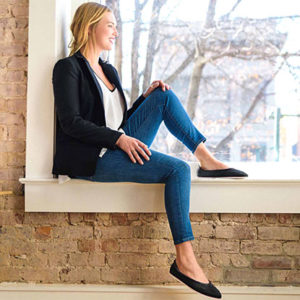 Do you wish your shoes fit better? Or maybe you love to be the first of your friends to own the coolest technology? Feetz makes custom-fit shoes using 3-D printers and your smartphone—the arch support, length, width, and more than 30 other measurements all custom fit to you. There are two casual, comfortable walking styles—with color options to match your personal style. We’re proud to say this shoe is better for the environment, using recyclable materials and less manufacturing waste, and is 100 percent made in San Diego. Sign up on our website to be in our exclusive early access program.
Do you wish your shoes fit better? Or maybe you love to be the first of your friends to own the coolest technology? Feetz makes custom-fit shoes using 3-D printers and your smartphone—the arch support, length, width, and more than 30 other measurements all custom fit to you. There are two casual, comfortable walking styles—with color options to match your personal style. We’re proud to say this shoe is better for the environment, using recyclable materials and less manufacturing waste, and is 100 percent made in San Diego. Sign up on our website to be in our exclusive early access program.
Want to pitch us in a future issue or invest in one of these companies? Email danl@sandiegomagazine.com.
15 Geek Out at the Fleet
By Dan Letchworth
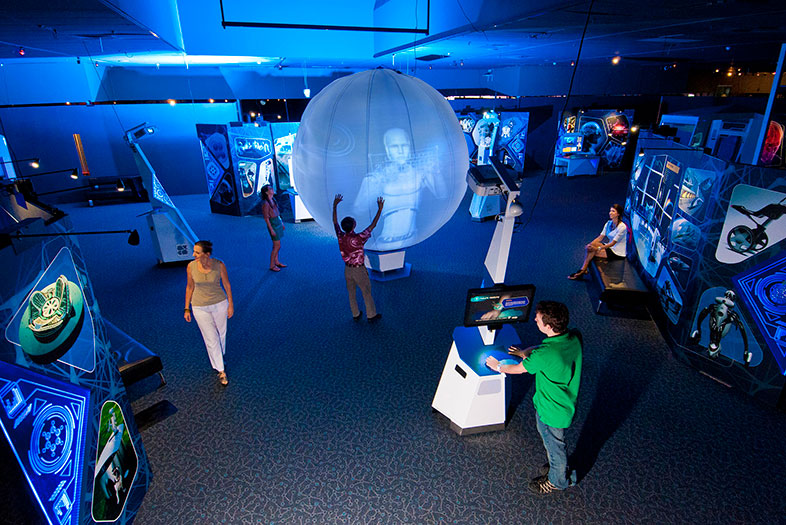
The Reuben H. Fleet Science Center’s new Science Fiction, Science Future exhibit explores the real-world possibilities behind some of sci-fi’s favorite technology. Displays replicate Star Trek’s transporter beams, Harry Potter’s invisibility cloak, and even Tupac’s 2012 Coachella hologram. An articulated robot head matches your facial expression, an X-ray mirror reflects a (simulated) live scan of your own insides, and several exhibits incorporate augmented reality. Perhaps the most technically impressive exhibit is Mindball, in which two guests strap electrodes to their heads and use their brain’s actual alpha and theta waves to play tug-of-war with a Ping-Pong ball. Genre fans can also enjoy the accompanying gallery of rare, vintage sci-fi novels and comic art. Through September 5.
16 Cure Me or Kill Me?
“A few years ago, I was diagnosed with Hodgkin’s lymphoma, a form of blood cancer. Four months into chemo treatment, I was told I was actually resistant,” says Ping Yeh, engineer and CEO of StemoniX. “I was then moved to the max-potency, max-toxic treatment. As I lay in bed, I wondered, ‘Is this treatment going to cure me or kill me?’”
Yeh’s battle overcoming cancer led him to dedicate his career to studying personalized medicine and founding StemoniX, which 3-D prints stem cells from skin cells at high volumes, which pharmaceutical companies can then use to test treatments for cancer and other diseases. His story won over the crowd at EvoNexus Demo Day, where his startup was declared the winner out of eight companies. Read an exclusive Q&A with Yeh about his journey and advances in stem cell research here.
17 Wise Words
“The second I think that I cannot learn something from anyone else is the time I don’t deserve to lead anymore.”
—Derek Herrera, CEO of Spinal Singularity, at a May 19 Inspiring Leaders event hosted by JLabs. Herrera is a former Marine Special Forces captain who was paralyzed after being shot on patrol in Afghanistan. He founded his company to better design devices that can improve the quality of life for people with spinal cord injuries. Watch his entire speech here.
18 Eyes Wide Open
A local company provides special agents to the rescue of the visually impaired, and finally finds good use for Google Glass.
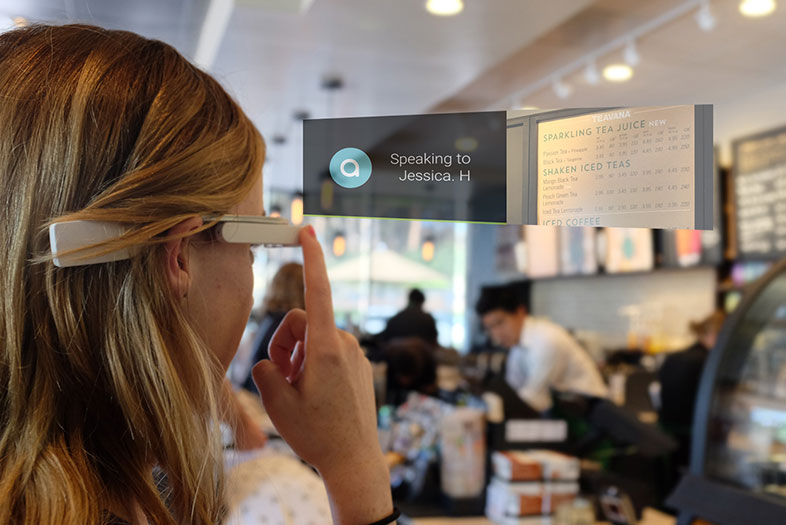
Google Glass was mocked upon its first release, but two San Diego engineers, Suman Kanuganti and Yuja Chang, discovered a great use for the optical device. Thanks to its camera, streaming capabilities, and touch pad, it could be the perfect visual interpreter for the blind.
Kanuganti and Chang founded Aira.io, which provides the visually impaired with remote assistance from another person live via Google Glass. They developed Aira when a close friend lost his eyesight and they witnessed his struggles in readjusting to living with a disability.
The technology shows an Aira “Agent”—who is trained and certified in working with the blind—what the user is looking at in real time, and what they need assistance with, like shopping or navigating a busy downtown sidewalk.
During his research, Kanuganti said several blind people told him that they order the same thing at restaurants over and over again, because they don’t want to bother the staff with questions. This is where live assistance like Aira can step in, since it enables Agents to remotely read a restaurant’s overhead menu to the user and identify what’s in front of them. From their “mission control” dashboard, the on-call assistants can also pinpoint a user’s location and guide them down the last 15 steps to a destination—often the most critical and difficult part to manage. Most importantly, Aira allows both the congenitally blind and those experiencing vision impairment to be independent, and call for help only when and where they want it.
The company has raised nearly $4 million and plans to officially launch to 200 users this year. One of Aira’s biggest fans is tech titan Larry Bock (co-founder of Illumina), who himself is visually impaired. When he met Kanuganti and Chang in 2015, he personally tested Aira and later joined the company as an investor and executive chairman. This kind of support, behind a service that improves the quality of life for so many, might even cast Google Glass’s troubled reputation in a whole new light.
19 A Testing Ground at The Q
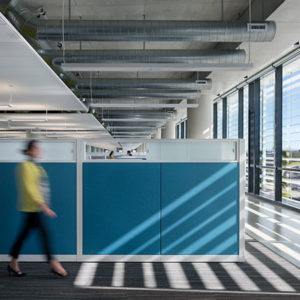 Eco-friendly office spaces are about as common as farm-to-table restaurants now, but Qualcomm took the concept of green building to the next level at its newest office complex, Building AY, on its “smart” Pacific Center campus. Building AY’s parking lot is filled with EV chargers, has a garden that grows produce for the employee cafeteria, and it’s one of the largest naturally ventilated buildings in the country. Inside, Qualcomm engineers are using their workplace as a testing ground for new technologies that could one day be commercialized or incorporated into public services (think smart trash cans). Bluetooth sensors installed throughout the building measure temperature, monitor water usage and the HVAC system, and proximity location beacons can link up to mobile devices so newcomers can navigate the hallways. Even the LED lighting transmits wireless data, using Qualcomm’s homegrown Lumicast technology, and water pressure monitors on fire hydrants promise to eliminate the need for manual inspections—which could save cities a lot of cash. The company, which aims to drop its greenhouse gas emissions by 30 percent over the next 10 years, has already received design and environmental awards for Building AY. The café is open to the public, so drop in for lunch the next time you’re in Sorrento Valley, and see for yourself why some Qualcomm employees have started hoping for a transfer.
Eco-friendly office spaces are about as common as farm-to-table restaurants now, but Qualcomm took the concept of green building to the next level at its newest office complex, Building AY, on its “smart” Pacific Center campus. Building AY’s parking lot is filled with EV chargers, has a garden that grows produce for the employee cafeteria, and it’s one of the largest naturally ventilated buildings in the country. Inside, Qualcomm engineers are using their workplace as a testing ground for new technologies that could one day be commercialized or incorporated into public services (think smart trash cans). Bluetooth sensors installed throughout the building measure temperature, monitor water usage and the HVAC system, and proximity location beacons can link up to mobile devices so newcomers can navigate the hallways. Even the LED lighting transmits wireless data, using Qualcomm’s homegrown Lumicast technology, and water pressure monitors on fire hydrants promise to eliminate the need for manual inspections—which could save cities a lot of cash. The company, which aims to drop its greenhouse gas emissions by 30 percent over the next 10 years, has already received design and environmental awards for Building AY. The café is open to the public, so drop in for lunch the next time you’re in Sorrento Valley, and see for yourself why some Qualcomm employees have started hoping for a transfer.
Tags: Innovation, Tip Sheet
